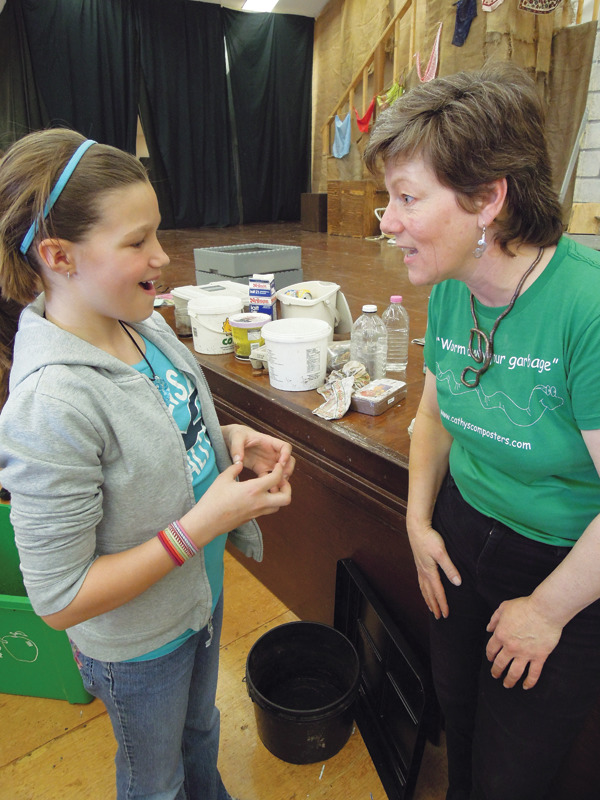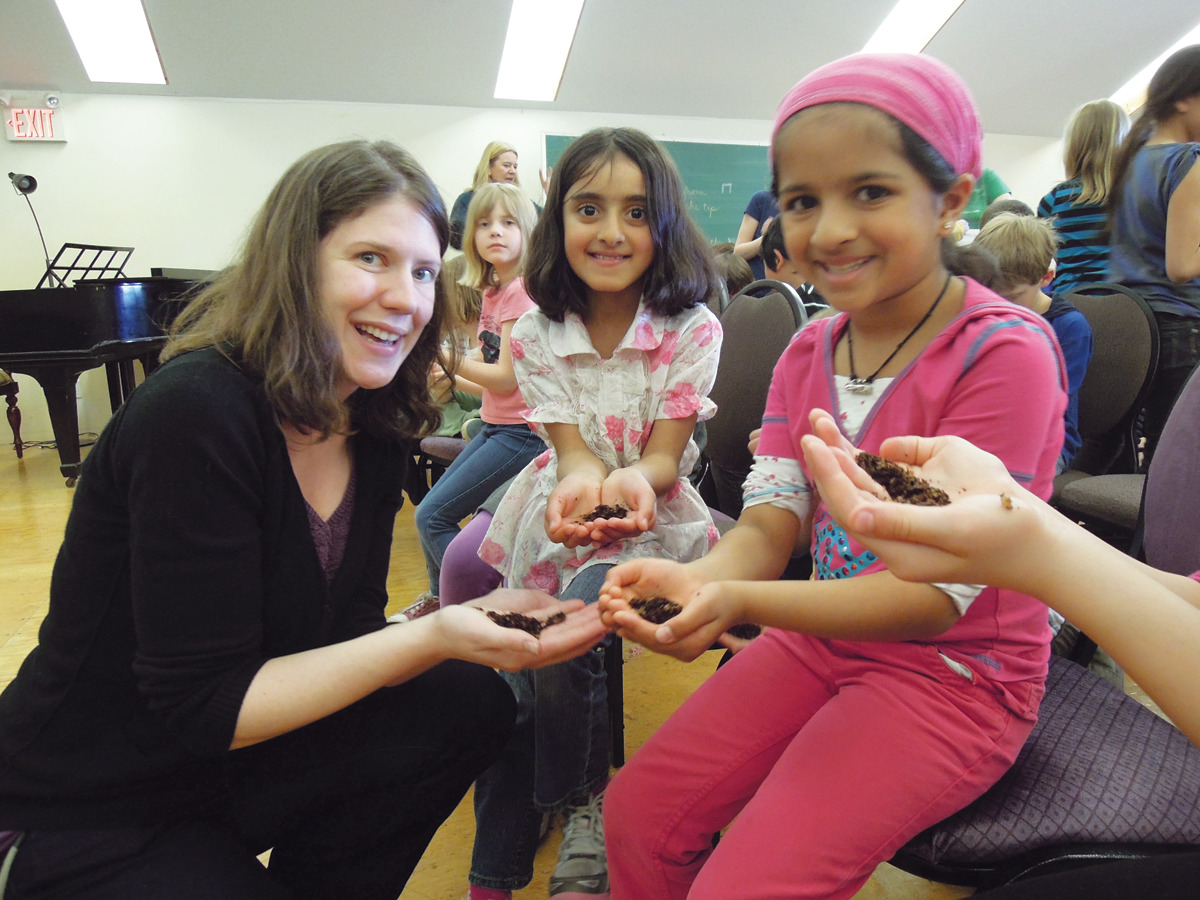Autumn is here and with it comes Waste Reduction Week in Canada (WRW) from October 15 to 21. One of the week’s relatively new and most successful programs is the Recycling Council of Ontario’s (RCO) Waste-Free Lunch Challenge (WFLC) launched four years ago. By 2010 the number of participating students rose to 50,000. In 2011 that number more than quadrupled to over 200,000 students from 792 schools that committed to bringing a waste-free lunch every day for one week.
 During WRW, registered classrooms or schools conduct a waste audit by placing all unwanted items consisting of single-serving containers, wrappers, fruit peelings and unfinished food on a table to be divided into categories of organics, recycling and waste. Reuse is promoted over recycling noting that thermoses for drinks are ideal and even yogurt can be spooned from a large container into one both smaller and reusable. RCO and sponsors recognize top schools by offering environmental field trips and prize money applied to their environmental projects.
During WRW, registered classrooms or schools conduct a waste audit by placing all unwanted items consisting of single-serving containers, wrappers, fruit peelings and unfinished food on a table to be divided into categories of organics, recycling and waste. Reuse is promoted over recycling noting that thermoses for drinks are ideal and even yogurt can be spooned from a large container into one both smaller and reusable. RCO and sponsors recognize top schools by offering environmental field trips and prize money applied to their environmental projects.
St Paul’s Catholic School in Norwood Ontario was one of the $1000 winners in 2011. The school’s Eco Club along with the principal, teachers, entire student body of 230, office staff, and custodian responded enthusiastically and were able to reduce lunch waste from 9.3 grams per person to almost zero. With their prize money, purchases were made for sturdy reusable carrying bags and reusable lunch containers. Sue Cornish, Carolyn Collins and Maureen Kawzenuk are the teachers involved with the Eco Club. Maureen Kawzenuk said, “Our club has grown in leaps and bounds and now has 43 students. In fact, it has become a rather prestigious group to join. Our members enjoy taking their lunch to sit beside the recycling and compost containers to direct everyone where to place materials. Recently the Eco Club enjoyed a field trip to Alderville First Nations Reserve to learn and to help plant native grasses.”
Another school winner was Frenchman’s Bay Public School in Pickering. Principal, Lynette Nastich was delighted that her students have chosen to plant a butterfly garden with their winnings. Last year the school’s Eco Club of 20 students, mostly grades 4, 5 and 6, designed a shrub border garden. Catherine Leighton, WFLC Program Manager, noted that the new video resources were a great support to both teachers and parents. Teachers can go onto the WFLC website to watch a video that instructs them on how to conduct a waste audit. Similarly, teachers can refer confused parents to the website to show them how to pack a lunch that does not create waste.
Promotion of the WFLC also brought calls from other provinces and even California. “Everyone wants to go waste-free. Eventually, we would love to see this as a national or even international challenge,” says Leighton. Teacher Barb Van Essen at Kelowna Christian Elementary K-6 in BC challenged her class. For Earth Week she already had started the classroom worm bin and had created environmental contests when she read about the WFLC. “Testing the lunch audit was really a lot of fun,” she said. “In fact, in many ways I felt it was really student-driven.”
“The simple message behind the WFLC is that every piece of waste counts. Everything has a value and these students have passionately committed to going waste-free,” said Jo-Anne St. Godard, Executive Director of the RCO. “Many schools were successfully able to measure individual lunch waste under 10 grams. All together, participating schools across Ontario managed to divert 25 tonnes of lunch material from landfills—equivalent in weight of two school buses. The students have clearly demonstrated how simple changes make all the difference.”
It’s easy to continue the momentum, once you’ve changed habits. Last year’s WFLC article in the spring issue of Canadian Teacher Magazine noted that prior to the WFLC the average student-generated 30 kilograms of lunch waste per school year. Perhaps this is the year to re-evaluate that figure and challenge other provinces. Interested teachers and principals can access resources and register for the challenge at www.wastefreelunch.ca.
 Compost at School! It’s free and easy.
Compost at School! It’s free and easy.
As the movement to produce our own fruits and vegetables gathers interest, we can rely upon compost to enrich our soil. If your school hasn’t joined the Green Wave of Composting, the following types of composters, or any combination thereof, will help get you started.
BACKYARD COMPOSTER
There are several familiar backyard composters, such as the Earth Machine for purchase or you can make one from scrap wood. Set your composter in a convenient location. Begin with a base layer of leaves, twigs and brush to provide airflow throughout your heap. Simply add unwanted lunch scraps as well as tea bags and coffee grounds followed by a handful of leaves. Do not include meat, bones or dairy products, as odours may attract animals. Periodically add a shovel of earth.
THE TUMBLER
Used as an outdoor composter without worms, this unit sits above the ground and rotates with a spin for faster decomposition. If your school is situated in bear country, the tumbler could be placed in the furnace room of the school with a tray beneath to catch liquid when spun.
WORM BIN
Vermicomposting in a worm bin not only takes food materials under a layer of damp shredded newspaper bedding as nourishment for 454 grams of red wigglers, but also makes a great study in biology. Worm castings are the best form of fertilizer and can be spread on school plants or even bagged and sold as a community fundraiser. Look for a local red wiggler worm breeder and investigate how to care for your new classroom residents. Ontario’s vermicomposting specialist and worm bin supplier Cathy Nesbitt of Cathy’s Crawly Composters offers workshops; anyone can subscribe to her regular newsletter.
ABOUT THE AUTHOR
Larraine Roulston
Larraine Roulston authors the Pee Wee at Castle Compost book series. The illustrated adventure stories combine composting facts with literature. Each book contains resources for teachers. Visit www.castlecompost.com.
This article is from Canadian Teacher Magazine’s Sept/Oct 2012 issue.











